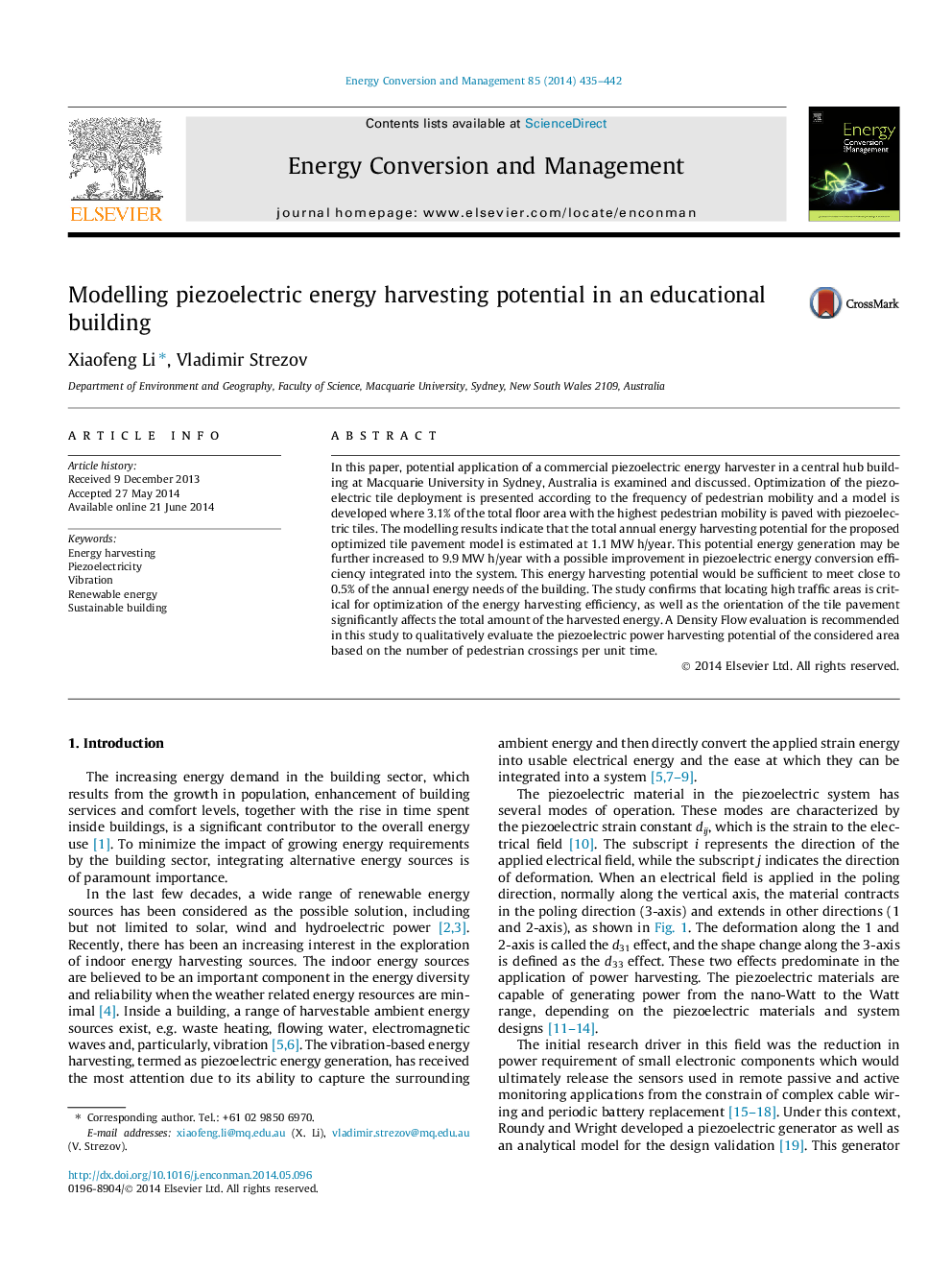| Article ID | Journal | Published Year | Pages | File Type |
|---|---|---|---|---|
| 7164763 | Energy Conversion and Management | 2014 | 8 Pages |
Abstract
In this paper, potential application of a commercial piezoelectric energy harvester in a central hub building at Macquarie University in Sydney, Australia is examined and discussed. Optimization of the piezoelectric tile deployment is presented according to the frequency of pedestrian mobility and a model is developed where 3.1% of the total floor area with the highest pedestrian mobility is paved with piezoelectric tiles. The modelling results indicate that the total annual energy harvesting potential for the proposed optimized tile pavement model is estimated at 1.1Â MWÂ h/year. This potential energy generation may be further increased to 9.9Â MWÂ h/year with a possible improvement in piezoelectric energy conversion efficiency integrated into the system. This energy harvesting potential would be sufficient to meet close to 0.5% of the annual energy needs of the building. The study confirms that locating high traffic areas is critical for optimization of the energy harvesting efficiency, as well as the orientation of the tile pavement significantly affects the total amount of the harvested energy. A Density Flow evaluation is recommended in this study to qualitatively evaluate the piezoelectric power harvesting potential of the considered area based on the number of pedestrian crossings per unit time.
Related Topics
Physical Sciences and Engineering
Energy
Energy (General)
Authors
Xiaofeng Li, Vladimir Strezov,
